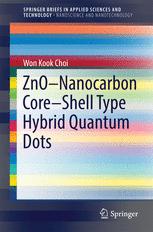

Most ebook files are in PDF format, so you can easily read them using various software such as Foxit Reader or directly on the Google Chrome browser.
Some ebook files are released by publishers in other formats such as .awz, .mobi, .epub, .fb2, etc. You may need to install specific software to read these formats on mobile/PC, such as Calibre.
Please read the tutorial at this link: https://ebookbell.com/faq
We offer FREE conversion to the popular formats you request; however, this may take some time. Therefore, right after payment, please email us, and we will try to provide the service as quickly as possible.
For some exceptional file formats or broken links (if any), please refrain from opening any disputes. Instead, email us first, and we will try to assist within a maximum of 6 hours.
EbookBell Team

0.0
0 reviewsThis book offers a comprehensive overview of ZnO-nano carbon core shell hybrid issues. There is significant interest in metal oxide/nanocarbon hybrid functional materials in the field of energy conversion and storage as electrode materials for supercapacitors, Li ion secondary battery, electrocatalysts for water splitting, and optoelectronic devices such as light emitting diodes and solar photovoltaic cells. Despite efforts to manipulate more uniform metal oxide-nanocarbon nanocomposite structures, they have shown poor performance because they are randomly scattered and non-uniformly attached to the nanocarbon surface. For higher and more effective performance of the hybrid structure, 3D conformal coating on metal oxides are highly desirable.
In the first part of the book, the physical and chemical properties of ZnO and nanocarbons and the state-of-the-art in related research are briefly summarized. In the next part, the 3D conformal coating synthetic processes of ZnO templated nanocarbon hybrid materials such as ZnO-graphene,-C60, single-walled (SWCNT) are introduced with the aid of schematic illustrations. Analysis of their chemical bonding and structure are also presented. In the final section, several applications are presented: UV photovoltaic cells and photoelectrochemical anodes for water splitting using ZnO-C60 and ZnO-graphene, white-light-emitting diodes based on ZnO-graphene quantum dots(GQDs), inverted solar cells using ligand-modified ZnO-graphene QDs, and P(VDF-TrFE) copolymer with mixed with nano-ring SWCNT.
The book describes how strong anchoring bonds between a ZnO core and carbon nanomaterial shell will ultimately prevail over the main drawbacks of ZnO with high charge recombination and poor electrochemical stability in liquid solutions. Due to the moderate energy states and excellent electric properties of the nanocarbons, ultrafast charge carrier transport from the ZnO core to the nanocarbon shell is guaranteed with the use of the photoluminescence (PL) lifetime measurement.
Given the growing interest and significance of future research in optoelectronic and electrochemical devices applications, the contents are very timely. This book is targeted towards researchers looking for highly efficient metal oxide-nanocarbon hybrid functional materials in the fields of nano-optoelectronics, photoelectrochemistry, energy storage and conversion.